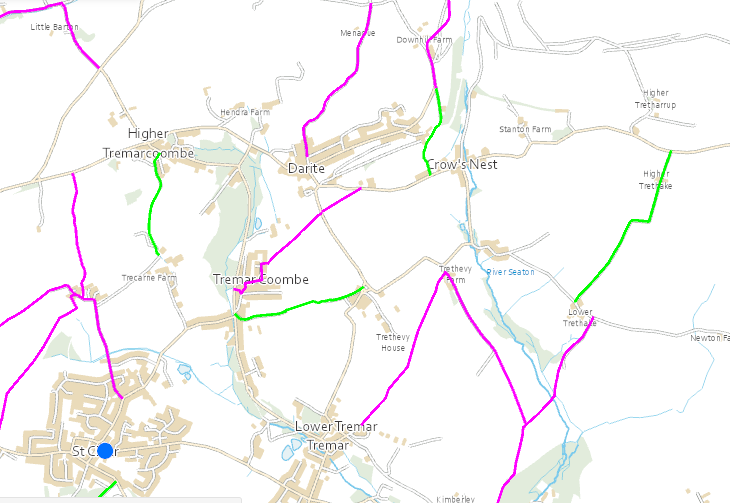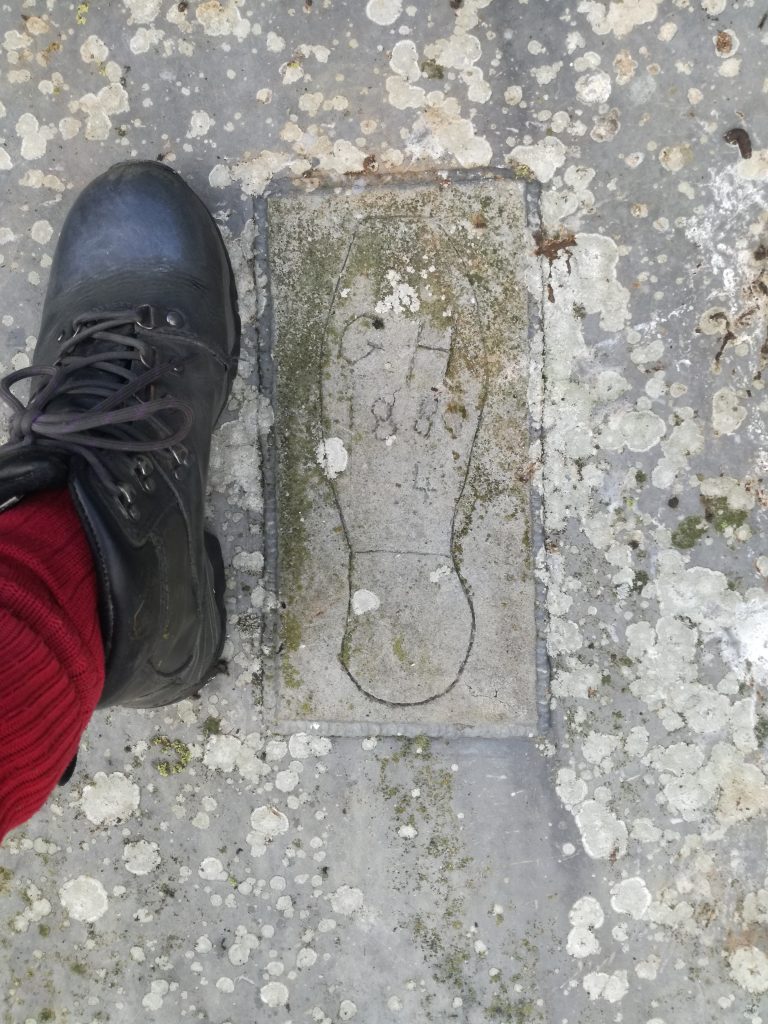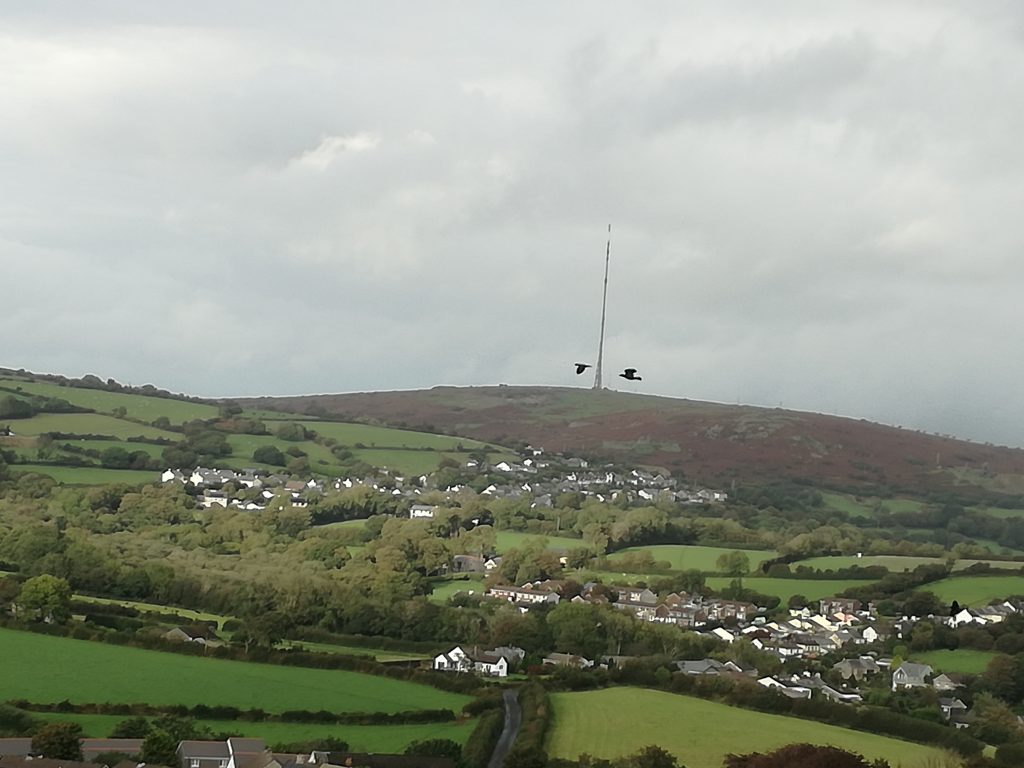September Bellswalk to St. Cleer
Our band of regular bell walkers, set off from Wheal Tor for a 7 mile hike crossing mining country and the river Seaton twice. To Darite and Tremar Coombe, at St Cleer church we had a warm welcome and were shown up the tower to see the great views, the plans for their bells and the opportunity to make some noise… then returning via Rosecraddock woods and back for a lovely evening meal at The Wheal Tor Inn. Thank you to everyone for making this possible and so special.




October 2023 Connection Newsletter
In this edition…
August Bells walk 7miles BRENTOR CHURCH

The group had a great evening walk, and were greeted at Brentor church by their Bell Captain. We draw quite a crowd as we rang the bells and the many visitors had a thrill as we left and they had the treat of bell ringing.
The route took us onto the moorland and we watched gliders circling overhead as we took footpaths in a circular 7miles walk. The evening finished with everyone enjoying meals at THE ROYAL, Horsebridge.
South Hill Parish Housing Need Survey Report results
South Hill Housing Need Survey Final Report V0.1 (cornwall.gov.uk)
Summary
Housing Need Survey
- A survey of local housing need was carried out by Cornwall Council’s
Affordable Housing Team, on behalf of South Hill Parish Council, between 20th
March 2023 and 30th April 2023. - The survey was sent to 225 households in the parish, and 65 responses were
received – a response rate of 29%. - 12% of respondents stated they were in need of affordable housing, 100% of
which stated they had a local connection to the parishes.
o 6 (75%) want to live Anywhere in the Parish
o 2 (25%) want to live in Golberdon
o 2 (25%) were interested in self-build housing - The survey identified 6 ‘hidden households’ that are not registered with
Homechoice.
CORNWALL COUNCIL encourage all parishes to consider conducting a parish survey.
Parish and other housing need surveys:
- Provide vital information about the housing need in an area
- Help in planning new developments
- Help to show the need for affordable housing
- Help show the level of community support for new development.
- Parish surveys can help to produce a Parish Plan, which sets out a vision for a parish.
You can see other parishes that have had recent housing need surveys here Housing needs surveys and reports – Cornwall Council
September 2023 Newsletter
In this edition…
- Parish Hall Harvest Supper
- Callington Honey Fair
- SHARE AGM
- Local Events
- Church Matters
- See all our Advertisers here
TerraCycle First Ever Newsletter
Let’s talk rubbish! Our first ever newsletter just landed (hs-sites.com)
and we’re in it … In The SPOTLIGHT

SHARE visit to The Incinerator
Tour of the incinerator centre or CERC Cornwall Energy Recovery Centre, as it’s called, at St Dennis.
If you’d like to join us on Thursday 24th August, either am or pm, let Laurence know.
There is no charge for the tour, which lasts 2 hours.
Children must be over 7 years of age to visit this site.
More details to follow once we have names and numbers.
Numbers are limited.
If you’d be prepared to drive please let us know.
We’ll visit the Bodmin recycling centre another time as it’s currently closed for redevelopment work. TY .
EMAIL laurencersmith76@btinternet.com
Thank you Laurence for arrranging this.
Suggestions for other visits welcome.

W.I Trip July 2023
This month’s adventure for the WI was a trip across from Plymouth to Drake’s Island where they had a guided tour around the island.
The weather stayed good and the 20 minute crossing in a small boat was smooth, the island guide was friendly and informative. The eco system of the island was full of birdsong with butterflies and bees in abundance.
The old brickwork of the tunnels and the ammunition stores was amazing but you definitely need a torch.
Everyone enjoyed their picnics surrounded by cannons. It was agreed by all that it was a worthwhile and excellent day out.
Continue readingChurch Matters August 2023
Faith and Trust: I’ve been enjoying a biography on the life of Abraham, written by David Jackman. Abraham was getting on in years when he was first upped sticks and left the security of his home in Haran (possibly in modern Turkey). He left it all to go to the land of Canaan with his family and nephew Lot. He didn’t have an easy life nor was he perfect, yet he is known for believing that, not only did God exist, but that such a being was calling him to go on such an adventure.
As a person, Abraham is both colourful and inspiring for those about to embark on a spiritual journey. He had to search his soul and face his shortcomings. His encounters with God enlarged his understanding of who this all-knowing, all-powerful being was. This faith is something deeper than mere head-knowledge or about having feelings of something ‘other’ or spiritual.
Continue reading